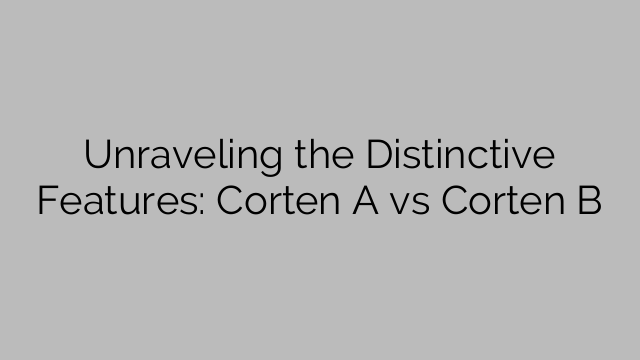1. 構成:
While both Corten A and Corten B are categorized as weathering steels, their compositions vary slightly. Corten A is primarily made up of iron, copper, chromium, and nickel. On the other hand, Corten B contains iron, chromium, and copper, with slightly higher amounts of chromium compared to Corten A. The presence of these elements enhances the material’s corrosion resistance properties.
2. Weathering Properties:
One of the primary characteristics of weathering steel is its ability to form a protective layer on its surface, called the patina. The patina acts as a barrier against further corrosion and gives Corten steel its unique reddish-brown appearance. Both Corten A and Corten B develop this patina over time when exposed to the elements, protecting the steel from rusting.
However, due to the composition differences, the formation of the protective patina might occur at different rates for Corten A and Corten B. Corten A generally develops its characteristic patina more quickly, while Corten B may take a slightly longer time. This variation in weathering properties can result in differences in overall appearance between the two types of weathering steel.
3. Applications:
Although both Corten A and Corten B are suitable for various applications, their specific uses can differ based on project requirements. Corten A is often preferred in applications where lightweight steel structures or architectural elements are involved. It is commonly used in building facades, sculptures, bridges, and outdoor art installations due to its aesthetic appeal and distinctive weathered look.
Corten B, with its enhanced corrosion resistance properties, is often selected for heavy-duty applications that require higher durability. It is commonly used in structural applications such as building frames, railway bridges, and industrial chimneys, where long-term durability is critical.
4. Availability and Cost:
In terms of availability, Corten A is more widely available and has been used in various projects worldwide. It is often readily sourced and stocked by steel suppliers. On the other hand, Corten B might be slightly less accessible due to its slightly different composition and specific applications.
In terms of cost, the prices of Corten A and Corten B can vary depending on factors such as availability, market demand, and region. Generally, Corten A tends to be more cost-effective due to its wider availability and usage.
In conclusion, both Corten A and Corten B are excellent options for weathering steel in construction and architectural applications. While they share many similarities, their composition, weathering properties, applications, and availability can vary. Therefore, it is crucial to carefully consider the specific requirements of your project to determine which type of weathering steel is the most suitable choice for your needs.
[ad_2]

